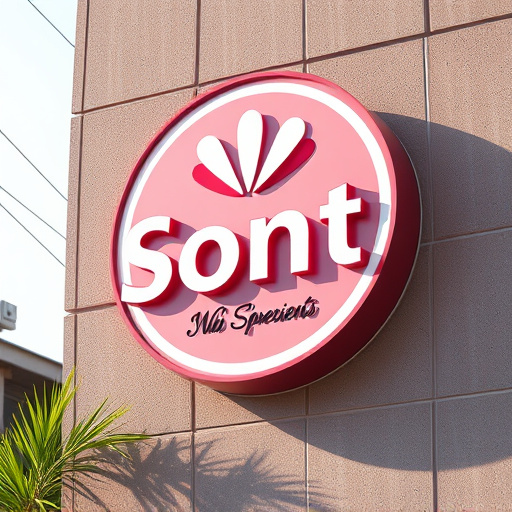Unveiling Paint Enhancement: Techniques and Their Unique Role
Paint enhancement is a detailed process that revives car exteriors by fixing minor flaws like swirls…….
Welcome to an exploration of paint enhancement, a dynamic field that transforms ordinary surfaces into visually stunning and durable finishes. This article aims to guide readers through the intricate world of enhancing paint applications, uncovering its historical roots, global impact, technological innovations, and future potential. By delving into these aspects, we will reveal how paint enhancement plays a pivotal role in various industries, from construction and automotive to art and architecture. Get ready to discover the science, aesthetics, and endless possibilities that make paint enhancement both an art and a highly practical endeavor.
Paint enhancement is a comprehensive term encompassing techniques and technologies designed to improve the performance, aesthetics, and longevity of paint or coating applications. It involves a meticulous process of modifying the chemical composition, application methods, and surface preparation to achieve superior results. The core components of paint enhancement include:
Resins and Pigments: These are the fundamental building blocks of paint, responsible for its color, texture, and adhesion. Modern enhancements often incorporate advanced resins like polyurethanes or acrylate esters, offering enhanced durability and versatility.
Additives: Additives play a crucial role in modifying paint properties. They can be catalysts to speed up drying times, surfactants to improve flow and wetting, or special agents that confer resistance to specific environmental factors like UV radiation or corrosion.
Surface Preparation: Proper surface preparation is paramount for successful paint enhancement. This involves cleaning, priming, and repairing the substrate to ensure optimal adhesion and long-lasting results. Techniques range from mechanical methods like sanding to chemical treatments for various materials.
The concept of paint enhancement has evolved over centuries, driven by humanity’s ever-growing desire for more durable and aesthetically pleasing surfaces. From ancient civilizations’ natural pigment applications to the industrial revolution’s introduction of synthetic resins, each era has contributed to the field’s advancement:
Ancient Times: Early civilizations like Egypt and Greece used natural pigments derived from minerals, plants, and insects to create vibrant wall paintings and sculptures. These organic colors had limited durability and vibrancy compared to modern standards.
Medieval Period: The Middle Ages saw the development of oil painting techniques, where artists mixed pigments with drying oils like linseed oil. This innovation significantly improved color retention and texture, revolutionizing artistic expressions.
Industrial Revolution (18th-19th Centuries): The industrial era brought about a surge in synthetic resin production, enabling advancements in paint technology. Synthetic resins like alkyds provided better adhesion, faster drying times, and enhanced durability, making them ideal for industrial applications.
20th Century: The 20th century witnessed a rapid proliferation of paint enhancement technologies. Polyurethanes emerged as a versatile resin, offering exceptional durability and a range of finishes. Water-based paints gained popularity due to their lower VOCs (Volatile Organic Compounds) and improved worker safety.
Paint enhancement is a global phenomenon, with countries around the world adopting and adapting technologies to meet unique cultural, environmental, and economic needs. The international influence can be observed in several key areas:
Regional Preferences: Different regions have distinct preferences for paint colors and finishes. For instance, Asia Pacific markets often favor rich, vibrant hues, while Western Europe leans towards more neutral tones and eco-friendly options.
Environmental Regulations: Stringent environmental regulations drive the development of low-VOC or zero-VOC paints globally. Countries like Europe and Canada have led the way in adopting stricter standards, prompting manufacturers to innovate environmentally friendly formulas.
Technological Adoption: Developed nations often lead in embracing new technologies. For example, the use of advanced surface treatments and smart coatings is more prevalent in North America and Western Europe, enhancing durability and energy efficiency.
The paint enhancement industry is shaped by several global trends:
| Trend | Description | Impact |
|---|---|---|
| Sustainability Focus: There is a growing demand for sustainable and eco-friendly paints. This trend drives the development of water-based, low-VOC, and bio-based formulations, reducing environmental impact. | Promotes healthier indoor environments and contributes to global sustainability goals. | Encourages innovation in green chemistry and fosters consumer confidence in environmentally conscious products. |
| Smart Coatings: Integration of technology into paints is rising, leading to the development of smart coatings with self-cleaning, antimicrobial, or energy-efficient properties. | Enhances product performance and opens doors for applications in healthcare, transportation, and construction. | Drives research into advanced materials and offers new solutions for challenging industries. |
| Customization: Consumers increasingly seek customized paint options, from colors to finishes. This trend is fueled by digital technologies enabling on-demand customization. | Empowers consumers and fosters creativity, leading to unique interior and exterior designs. | Requires manufacturers to invest in flexible production systems and digital platforms. |
| Digital Transformation: The industry embraces digital tools for design, visualization, and application. Augmented reality (AR) and virtual reality (VR) enhance customer experiences and streamline professional painting services. | Transforms how customers interact with paint products and services, offering immersive experiences. | Facilitates remote collaboration and streamlines workflows within manufacturing and distribution chains. |
The global paint enhancement market has experienced steady growth, driven by rising construction activities, increasing focus on interior design, and growing demand for durable and aesthetically pleasing finishes. According to a report by Grand View Research, the global architectural coatings market size was valued at USD 248.7 billion in 2021 and is expected to grow at a compound annual growth rate (CAGR) of 5.3% from 2022 to 2030. This growth is largely attributed to paint enhancement technologies, particularly in the residential and commercial sectors.
The market can be segmented based on various factors:
Residential vs. Commercial: Residential applications dominate the market due to higher painting volumes and frequent redecorating. However, commercial projects offer higher profit margins and specialized enhancement requirements.
Product Type: The market includes a wide range of products, from traditional paints to advanced coatings, each catering to specific needs. Specialty coatings, for instance, account for a significant share due to their unique properties and applications in industries like automotive and aerospace.
Geographical Regions: Asia Pacific is the largest market due to rapid urbanization and growing construction activities. North America and Europe follow, with strong demand driven by both residential and commercial sectors.
Paint enhancement has a significant economic impact:
Employment Generation: The industry supports numerous jobs, from paint manufacturers and distributors to painters and interior designers.
Revenue Generation: Advanced paint technologies contribute to higher revenue streams for manufacturers and retailers, especially in regions with growing construction and renovation activities.
Future Growth Areas: Emerging markets in Asia and Latin America present significant growth opportunities due to increasing urbanization and rising disposable incomes. Additionally, the demand for specialized coatings in industries like electronics and healthcare will drive future market expansion.
The field of paint enhancement has witnessed remarkable technological advancements, driving innovation and improving performance. Some significant developments include:
Nanotechnology: Nanoparticles are incorporated into paints to enhance properties like durability, scratch resistance, and self-cleaning abilities. This technology enables the creation of superhydrophobic surfaces that repel water and stains.
Smart Materials: Developing smart coatings with responsive properties is an exciting area of research. These materials can change color in response to temperature or light, offer antimicrobial protection, or even heal themselves by filling microscopic cracks.
3D Printing and Digital Manufacturing: 3D printing technology allows for precise, customized paint application, enabling the creation of intricate designs and complex shapes. This method is particularly valuable in industries like automotive and aerospace.
These technological advancements have far-reaching implications:
Improved Durability: Nanotechnology enhances paint durability by providing better resistance to wear and tear, corrosion, and environmental factors. This translates to longer-lasting finishes, reducing maintenance costs.
Enhanced Aesthetics: Smart materials offer unique visual experiences, allowing surfaces to adapt and change appearance over time. This opens doors for creative design possibilities in architecture and interior design.
Sustainability and Efficiency: Digital manufacturing techniques can reduce material waste and optimize resource use. Additionally, low-VOC and water-based paints, combined with advanced application technologies, contribute to healthier indoor environments and reduced environmental impact.
The paint industry is subject to various regulations aimed at ensuring product safety, environmental protection, and consumer rights. Key global policies include:
REACH (Registration, Evaluation, Authorization, and Restriction of Chemicals): This European Union regulation requires manufacturers to register and evaluate chemicals used in products like paints, ensuring safe use and managing risks associated with chemical substances.
TSCA (Toxic Substances Control Act): In the United States, TSCA regulates the manufacture, import, and use of certain chemicals, including those used in paints, to protect human health and the environment.
Global Harmonized System (GHS): GHS is an international standard for classifying and labeling chemicals, providing a uniform approach to communicating hazards associated with paint and similar products.
In addition to global frameworks, many countries have local regulations and industry-specific standards:
Emission Standards: Many regions have strict emission standards for volatile organic compounds (VOCs) in paints, encouraging the development of low-VOC and water-based formulations.
Building Codes: Local building codes often specify paint requirements for various construction projects, ensuring compliance with safety and durability standards.
Industry-Specific Guidelines: Industries like automotive or aerospace may have unique regulations regarding paint performance, environmental impact, and waste management.
Despite its numerous benefits, the paint enhancement industry faces several challenges:
Cost and Adoption: Advanced paint technologies can be more expensive than traditional options, hindering widespread adoption, especially in regions with limited financial resources.
Regulatory Compliance: Keeping up with evolving regulations, particularly regarding chemical content and environmental impact, poses a challenge for manufacturers.
Performance Variability: Ensuring consistent performance across different surfaces, climates, and conditions remains an issue, requiring continuous research and development.
To address these challenges, the following strategies can be implemented:
Incentivize Innovation: Governments and industry bodies can offer incentives, grants, or tax benefits to encourage the development and adoption of sustainable paint technologies.
Education and Training: Providing training programs for professionals in the painting industry helps them stay updated with new techniques and ensures proper application, leading to better results.
Collaborative Research: Public-private partnerships can drive research into advanced materials and processes, fostering innovation while addressing performance inconsistencies.
Project: Revitalization of a historic city center in Europe using eco-friendly paint enhancement technologies.
Challenge: The project aimed to revitalize the city’s aging buildings while minimizing environmental impact. Traditional paints released harmful VOCs, and the diverse climates posed challenges for long-lasting finishes.
Solution: The team adopted water-based, low-VOC acrylic paints with added UV resistance. They also utilized a surface preparation method that involved mechanical sanding and chemical treatment to improve adhesion.
Outcome: The project successfully revitalized the city center, reducing air pollution and ensuring durable, eco-friendly finishes. The use of advanced paints contributed to improved indoor air quality in nearby buildings, leading to positive health outcomes.
Project: Development of a self-cleaning paint for exterior walls of commercial buildings in a coastal city.
Problem: Commercial buildings in the coastal area faced frequent fouling by salt water and airborne pollutants, requiring regular cleaning and maintenance.
Solution: Researchers developed a nanocomposite paint with superhydrophobic properties, inspired by nature’s self-cleaning surfaces. The paint repels water and stains, maintaining a clean appearance even in harsh conditions.
Impact: The self-cleaning exterior paint significantly reduced maintenance costs for building owners and improved the overall aesthetic appeal of the city skyline.
Project: Creating anti-microbial paint for hospital walls to prevent the spread of infections.
Goal: To develop a paint that inhibits the growth of bacteria, fungi, and viruses on hospital walls, promoting cleaner and safer environments.
Solution: Scientists incorporated antimicrobial agents into the paint formulation, ensuring effective inhibition of harmful microorganisms without compromising aesthetics or safety.
Result: The anti-microbial paint has been widely adopted in hospitals worldwide, contributing to improved infection control and patient safety.
The future of paint enhancement holds exciting possibilities shaped by technological advancements and evolving demands:
Personalized Paint Experiences: Digital technologies enable on-demand customization of colors, finishes, and even smart features, catering to individual preferences.
Advanced Surface Treatments: The market will see more specialized surface treatments for various applications, from anti-graffiti coatings to self-healing paints.
Biomimicry in Design: Drawing inspiration from nature’s designs, biomimicry will lead to innovative paint solutions, such as self-cleaning and adaptive surfaces.
To capitalize on these trends, industry players should:
Invest in Research and Development: Continuous R&D is crucial to staying ahead in the market by developing new products and improving existing ones.
Embrace Digital Transformation: Adopting digital tools and platforms can enhance customer engagement, streamline operations, and enable remote collaboration.
Focus on Sustainability: With growing consumer awareness, manufacturers should prioritize sustainable practices and products, aligning with environmental regulations and market demands.
In conclusion, paint enhancement is a dynamic and multifaceted field that continues to evolve, driven by technological advancements, global trends, and evolving needs. From its historical roots to modern innovations, it has transformed the way we perceive and interact with surfaces. The industry’s global impact, economic significance, and potential for sustainable growth make it a critical component of various sectors, including construction, automotive, healthcare, and interior design.
As we look ahead, paint enhancement technologies will play a pivotal role in shaping our future environments, offering improved durability, enhanced aesthetics, and increased sustainability. By overcoming challenges and embracing emerging trends, the industry can unlock new possibilities, ensuring that our world is painted with innovative, functional, and aesthetically pleasing finishes.

Paint enhancement is a detailed process that revives car exteriors by fixing minor flaws like swirls…….

Paint enhancement is a versatile and powerful solution for revamping surfaces, providing both aesthe…….

TL;DR: Paint enhancement maximization strategies, from polishing to advanced coatings like ceramic f…….